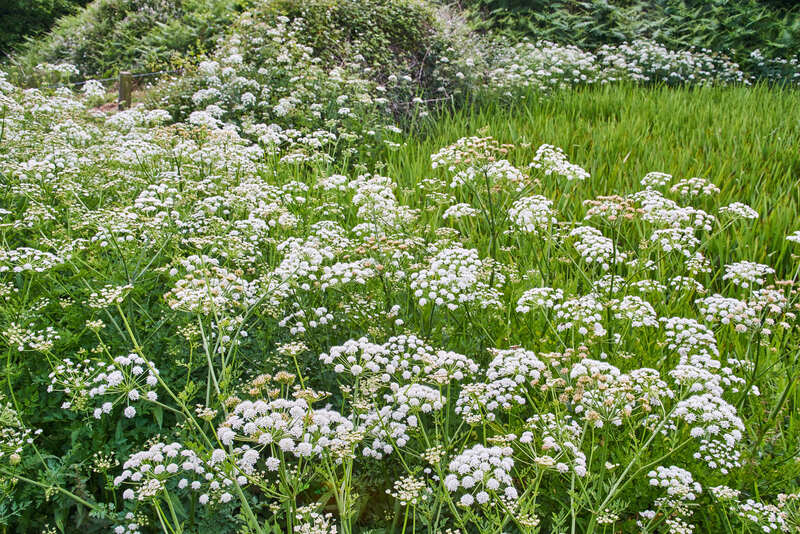Green Pathways: Waste to Nutrient-Rich Soil
Posted on 22/06/2025
Green Pathways: Transforming Waste into Nutrient-Rich Soil
Green Pathways represent innovative and sustainable approaches to transforming our organic waste into nutrient-rich soil. As the world grapples with pollution, dwindling land fertility, and unsustainable agricultural practices, the concept of turning waste into valuable soil amendments has gained significant traction. Not only does this process close the loop in organic matter cycles, but it also paves the way for eco-friendly solutions that benefit both the environment and our food systems. This article offers a comprehensive exploration of how waste can be turned into nutrient-rich soil, the science behind the process, and practical pathways you can take to contribute to a greener future.

Understanding the Need for Sustainable Waste Management
Global waste production is at an all-time high. Millions of tons of organic waste--kitchen scraps, yard trimmings, agricultural residues--end up in landfills every year, contributing to greenhouse gas emissions and land degradation. Simultaneously, many soils are losing their nutrient content due to continuous cropping and the use of chemical fertilizers.
- Landfill overuse increases methane production, a potent greenhouse gas.
- Soil degradation threatens food security and plant health worldwide.
- Chemical fertilizers may lead to water contamination and long-term soil exhaustion.
Green pathways offer solution-driven systems that manage waste while rebuilding soil fertility, achieving both sustainability and resilience within urban and rural landscapes.
The Science Behind Turning Waste into Nutrient-Rich Soil
Composting: Nature's Recycling System
The most recognized method of transforming waste into nutrient-rich soil is composting. Composting is a controlled biological process where microorganisms break down organic matter--like food scraps and leaves--into humus, a material rich in nutrients that enhances soil quality.
- Aerobic composting: Utilizes oxygen and heat, supporting bacteria and fungi that transform waste efficiently.
- Anaerobic composting: Occurs in the absence of oxygen, typically producing methane but still resulting in organic material breakdown.
- Vermicomposting: Employs worms (usually red wigglers) to accelerate the breakdown process, resulting in a highly fertile soil amendment known as worm castings.
The composting process relies on balancing the carbon to nitrogen ratio (often called the "greens" to "browns" mix), adequate moisture, and sufficient aeration. When well-managed, the result is a pathogen-free, odorless, and crumbly material that replenishes and revitalizes tired soils.
Biochar: Enhancing Soils and Sequestering Carbon
Another innovative green pathway is the production and application of biochar. Biochar is a form of charcoal made by burning organic waste in a low-oxygen environment (a process known as pyrolysis). The resulting material is porous, stable, and excellent at holding onto nutrients and water, making it an exceptional soil amendment.
- Retains nutrients: Biochar's structure helps prevent leaching of fertilizers.
- Improves structure: Enhances soil aeration and water-holding capacity.
- Carbon sequestration: Locks carbon into the soil, mitigating climate change.
Incorporating biochar into garden beds, fields, or even pots improves soil fertility for years, playing a dual role in soil restoration and climate mitigation.
Bokashi: Fermentation-Based Soil Enrichment
Bokashi is a Japanese word meaning "fermented organic matter." The Bokashi composting process is unique because it uses anaerobic fermentation, with the help of specific microbes (often referred to as Effective Microorganisms or EM), to predigest food waste before it is added to the soil.
- Works with all food waste, including meat and dairy, which are often excluded from traditional composting.
- Quick turnaround: Takes as little as 2-4 weeks to process waste.
- Creates nutrient-dense pre-compost that enhances soil microbiology when buried.
Bokashi's closed-system fermentation is ideal for small spaces and urban dwellers, offering another accessible green pathway to create nutrient-rich soil from household waste.
Benefits of Creating Nutrient-Rich Soil from Waste
-
Soil Fertility:
Regular addition of compost, biochar, or bokashi increases organic matter, boosts nutrient content, and supports beneficial soil organisms. -
Reduced Environmental Impact:
Keeping organic waste out of landfills reduces methane emissions and curbs pollution. -
Circular Economy:
Waste becomes a resource, creating local jobs, reducing disposal costs, and keeping nutrients in the system. -
Improved Crop Yields:
Plants grown in amended soils are healthier, more resilient, and often more nutrient-dense. -
Water Conservation:
Soils improved with organic matter retain moisture better, leading to decreased water use.
Practical Steps: How to Start Your Own Green Pathway
1. Home Composting
- Choose a system: Tumblers, piles, bins, and in-ground digesters are popular for different spaces.
- Select your waste: Only add organic materials--fruit and vegetable scraps, coffee grounds, egg shells, untreated yard waste.
- Maintain balance: Mix "greens" (nitrogen-rich, like food scraps) with "browns" (carbon-rich, like leaves and paper).
- Aerate and water: Turn regularly and keep the pile moist but not soggy.
2. Vermiculture (Worm Farming)
- Set up a worm bin: Purchase red wigglers and a worm bin kit or create your own.
- Feed appropriately: Small food scraps, shredded paper, and coffee grounds work well.
- Harvest worm castings: After several months, collect the nutrient-rich castings for your garden.
3. Urban Composting Programs
- Community drop-off: Many cities now offer green bin programs or communal compost heaps.
- Shared gardens: Volunteer or participate in community gardens that use composted material for soil improvement.
4. Bokashi Method
- Get a Bokashi kit: Commercial kits come with EM bran and airtight bins.
- Layer waste: Alternate food waste with EM bran, seal the bin, and let it ferment.
- Bury or compost: After fermentation, bury the material in soil or add it to your compost pile.
5. Creating and Using Biochar
- Source woody waste: Pruned branches, wood chips, or bamboo are suitable materials.
- Pyrolysis: Burn in low-oxygen (special kilns or open pit) to form biochar.
- Charge the biochar: Soak in compost tea or manure to add microbes and nutrients before application.
Case Studies: Success Stories of Waste to Nutrient-Rich Soil
San Francisco's Zero Waste Initiative
San Francisco is a global leader in municipal composting. Its mandatory city-wide composting program diverts more than 650,000 tons of food and yard waste annually from landfills, transforming it into nutrient-rich compost for local farms and vineyards. This green pathway has reduced landfill use, lowered emissions, and improved regional soil health.
Post-Hurricane Restoration in Puerto Rico
After hurricanes devastated Puerto Rico's soils, community groups launched composting projects using storm debris and organic waste to remediate soils and jumpstart food production. These efforts have rebuilt lost soil, providing fresh produce and supporting food security in the face of adversity.
Biochar Projects in East Africa
Several East African NGOs teach farmers to create biochar from crop residues. The biochar, when added to depleted soils, has dramatically increased yields, reduced fertilizer dependency, and sequestered carbon for decades.
Addressing Common Challenges
- Odor and pests: Maintain proper "green" to "brown" ratios and avoid meat or dairy in basic compost systems.
- Space limitations: Investigate bokashi, worm bins, or community drop-off programs.
- Lack of knowledge: Many local extension offices and online resources provide free training and support.
By understanding the process and choosing the right pathway, anyone--from city dwellers to farmers--can participate in this vital green transformation.

The Future of Soil Health: Green Pathways in Policy and Innovation
The transition to waste-to-nutrient-rich-soil green pathways is being accelerated by policy, technology, and grassroots action. Cities around the world are launching curbside composting. Innovative start-ups are creating automated at-home compost systems. Farms are investing in biochar reactors and capturing the value of every organic input.
- Policy Initiatives: Governments incentivize composting programs and ban organic waste from landfills.
- Technology Integration: Smart sensors monitor compost piles to optimize decomposition and prevent contamination.
- Data-Driven Agriculture: Farmers use precision soil amendments based on real-time soil health data.
These efforts are making it easier than ever for individuals and companies to adopt green pathways that not only manage waste, but also regenerate our soils, restore landscapes, and secure a healthy future for all.
Conclusion: Your Role in the Green Pathway Movement
Every banana peel tossed, every leaf raked, and every cup of coffee grounds discarded carries the potential to rebuild our soils and restore ecological balance. By embracing green pathways--composting, biochar, bokashi, and more--we turn today's waste into tomorrow's abundance.
Whether you have a sprawling backyard, a balcony, or just a kitchen counter, there are accessible, impactful steps you can take:
- Begin a composting system suited to your lifestyle.
- Support community or municipal composting initiatives.
- Advocate for policies that promote waste reduction and soil regeneration.
- Share your knowledge with neighbors and friends.
Green pathways from waste to nutrient-rich soil are opening new horizons in sustainability, food security, and environmental health. By joining this movement, you become an agent of change--cultivating healthier soils, cleaner cities, and a greener planet for generations to come.
Frequently Asked Questions
- Is it difficult to begin composting at home?
Home composting can be started with minimal investment and space. Many desktop and balcony-friendly options are available. - What's the difference between compost and biochar?
Compost adds organic matter and nutrients; biochar improves soil structure and retains nutrients and water. - Can I compost meat or dairy waste?
Yes, with special methods like bokashi or advanced aerobic digesters, but avoid them in basic backyard compost piles to prevent pests. - How long does it take to get nutrient-rich soil from waste?
Traditional composting can take 3-12 months. Fast methods like bokashi or vermicomposting can yield results in as little as 2-4 weeks.
Green pathways to nutrient-rich soil are accessible, scalable, and transformative. Start your journey today!

